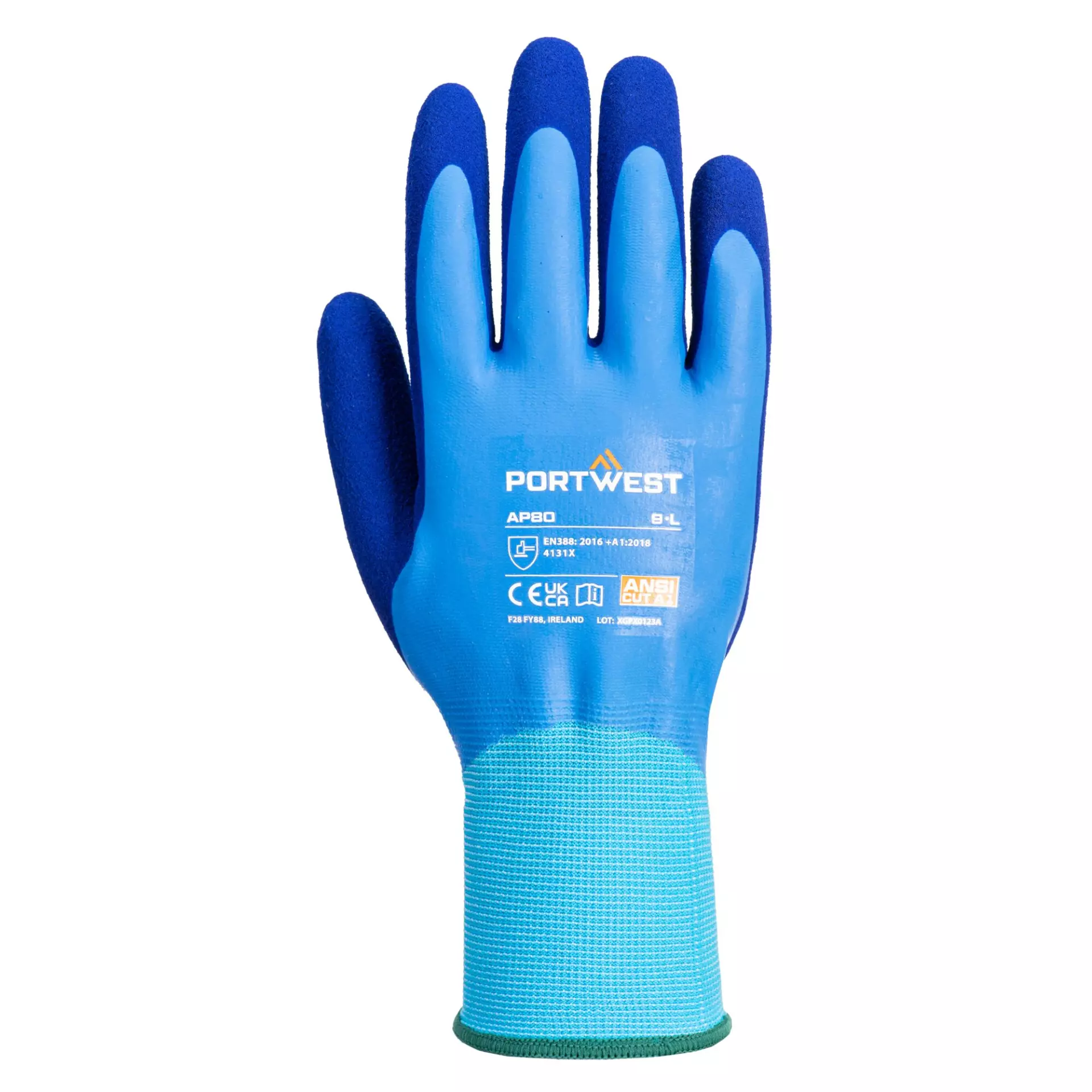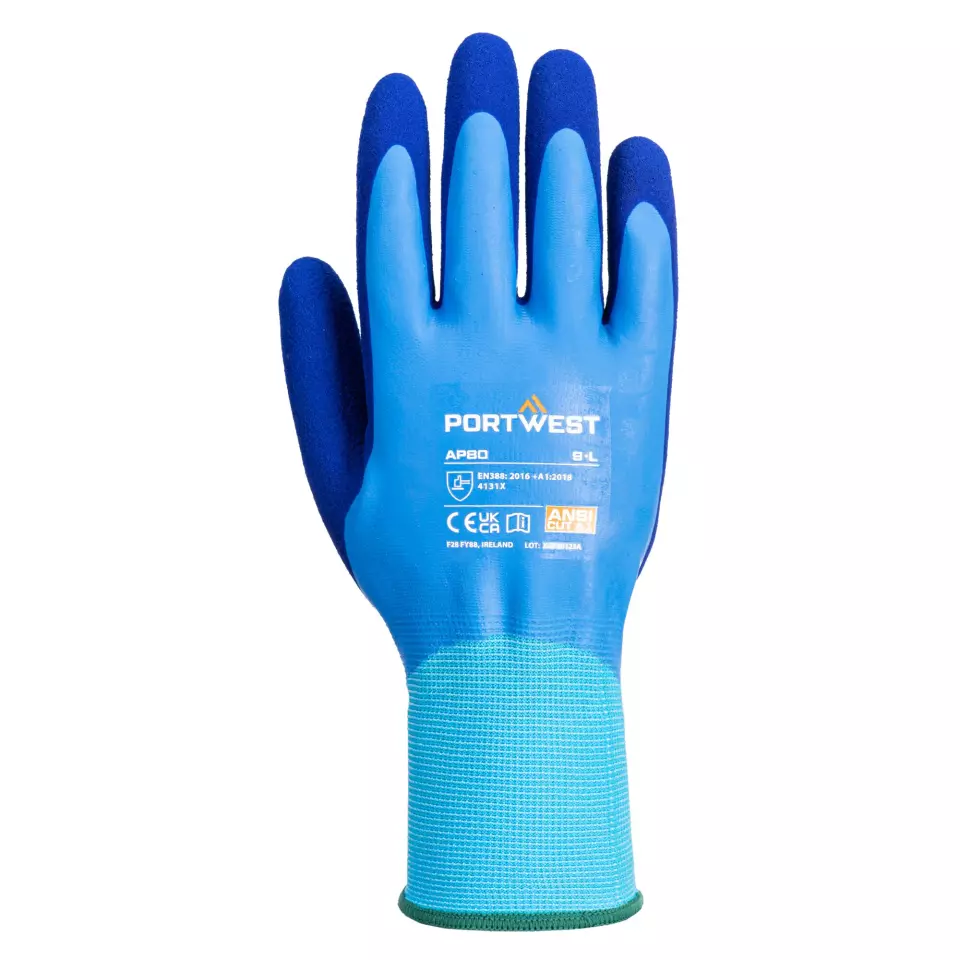
Features You'll Love

Cuff Style · Elastic
Determines how the glove secures around the wrist, affecting fit, protection from debris, and ease of putting gloves on and taking them off.

EN 388 · Abrasion Resistance Level 4, Tear Resistance Level 3, Puncture Resistance Level 1
Offers the highest level of protection against intense rubbing and wear from rough materials.
Offers strong resistance against ripping, making the material durable against snags and tears.
Provides basic protection against punctures from blunt objects like splinters, not sharp points like needles.
Portwest
Liquid Pro Glove, Blue, 12 pairs
Liquid Pro Glove, Blue, 12 pairs
(18)
56,08 €
Price per 12 pairs
4,67 € / pair
Choose size
Shipping fee is 7,95 € for orders under 80,00 €
Features You'll Love

Cuff Style · Elastic
Determines how the glove secures around the wrist, affecting fit, protection from debris, and ease of putting gloves on and taking them off.

EN 388 · Abrasion Resistance Level 4, Tear Resistance Level 3, Puncture Resistance Level 1
Offers the highest level of protection against intense rubbing and wear from rough materials.
Offers strong resistance against ripping, making the material durable against snags and tears.
Provides basic protection against punctures from blunt objects like splinters, not sharp points like needles.
Product description
Professional work gloves featuring innovative double coating technology with dual latex layers for maximum liquid protection and superior grip performance. The two-layer construction combines an inner smooth latex layer with an outer sandy foam layer, providing optimal protection, grip, and durability in both wet and dry conditions. Built with a seamless 13-gauge nylon liner and elasticated cuffs, these lightweight gloves offer enhanced dexterity and secure fit for demanding work environments.
Product Features:
- Dual latex coating for additional protection in tough conditions
- Double-dipped two-layer construction with inner smooth layer and outer sandy layer
- Seamless 13-gauge liner with nylon's high tensile strength and additional stretch
- Elasticated cuffs for secure fit
- Lightweight and comfortable design
Technical Details:
- Latex foam coating for excellent grip in wet and dry conditions
- Maximum liquid protection through double coating technology
- Enhanced dexterity and improved fit
- CE certified
Standards:
- EN ISO 21420:2020 Dexterity 5
- EN 388:2016 + A1:2018 (2131X)
- ANSI/ISEA 105:2016 CUT Level (A1)
- ANSI/ISEA 105:2016 ABRASION Level (3)
- ANSI/ISEA 105:2016 PUNCTURE Level (2)